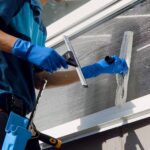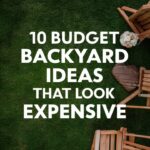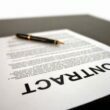Drilling is a technique that days back to the Upper Paleolithic period. Ancient relics made out of shells and teeth indicate that early humans could bore holes to string things together. These rudimentary ways of drilling may seem unsophisticated in today’s world.
However, it speaks to the significance of drilling as a technique and its utility. As technology has advanced, so has the methodology to drill through surfaces. Drilling has evolved to assist in everything from construction and manufacturing to mining and extracting.

How Drilling Is Used In Construction
Drilling in construction is used for preparing the foundation, installing HVAC and plumbing systems, and making manholes. Drilling is also down for making tunnels, laying down pipes, and phone lines. The technique has many uses as drilling is used for various reasons during construction.
Most construction projects make use of multiple different drilling tools and drilling methods. Advanced construction technology has enabled modern drilling equipment to make constructing all kinds of structures easy.
Modern drilling has made it convenient to build everything from residential structures to mega projects like multi-purpose dams and multi-story skyscrapers.
Modern Drilling Equipment
Here are some latest drilling techniques being used currently for construction purposes:
Directional Drilling
Directional drilling or horizontal directional drilling (HDD) is an innovative drilling technology that allows drilling horizontally. Traditionally, vertical drilling, a process by which force is applied from top to bottom has been used.
HDD is a trenchless drilling method by Boring Americans. HDD is made possible through steerable drill bits that can change direction and penetrate through any material. This ability to maneuver the drill bit means there is no limitation on the direction or angle at which drilling can be done.
HDD was introduced in the 1920s when drilling for oil and other minerals made it necessary to use a drilling method that was not exclusively vertical. Natural subterranean formations are rarely, if ever, straightforward deposits usually found in fractured forms.
Like Us on Facebook!
Vertical drilling is not ideal as it is nearly impossible at deep levels. Directional drilling has many applications. Aside from helping to dig for sewage systems, it also enables reaching natural reserves that may not be accessible through simple vertical drilling.
Subscribe Us on YouTube!
Automated Drilling
Much like many other operations, drilling has been automated as well. Automation eliminates the possibility of human error and damage caused by it consequently. Automated drilling systems allow users to define the specifications relating to the drill based on the required job type.
The speed, weight on the drill bit, and torque can be adjusted so that the drill can operate effectively without constant manual maneuvering. Automation minimizes risks and reduces the possibility of mistakes being made; at the same time, it is more cost-effective as it makes hiring a full-time drill operator redundant.
Also Read: Innovations in Dust Mitigation for Construction Sites
Rotary Steerable Systems (RSS)
Another innovation in drilling technology is the rotary steerable systems (RSS). RSS is a type of automatic directional drilling technology that consists of a downhole steering tool and a ground monitoring system.
The technology makes it possible to reach difficult areas underground with exceptional accuracy. The system also has a strong and reliable platform that keeps the downhill safe and secure.
Managed Pressure Drilling (MPD)
This drilling process aims to prevent the buildup of pressure resulting from the formation of fluids on the surface. The idea is to maintain the pressure level, allowing for greater control.
A technique within the MPD is the Constant Bottom-Hole Pressure (CBHP) that keeps the pressure within the bottom-hole content. This is done through a continuous flow of mud or other material so that the pressure remains the same.
Also Read: How to Transport Your Heavy Machinery
Modern Drill Bits
It is not just the drilling equipment and processes that have undergone technological advancement but also the material used to manufacture drilling equipment. The latest drilling equipment makes use of drill bits made out of materials that are reliable and durable.
Drill bits must be very strong as they must cut through all kinds of material. They also must be resistant to issues such as rust and corrosion so there is no need for frequent replacement.
Lately, drill bits enhanced with industrial-grade diamonds are being used. Diamond is the hardest material on Earth. It is strong, durable, and does not lose its form easily. Diamond drill bits are strong and sturdy enough to last a long time.
Another material commonly used for making drill bits is carbide. The compound measures 9 on the Mohs scale and is just behind the diamond as the hardest material. It is similarly durable and perfect for drilling through any material.
Also Read; Types of machines essential to the demolition industry
Modern Construction Technology
New drilling techniques, processes, and equipment are only a chapter in the evolution of modern construction and manufacturing. Modern infrastructure and buildings require advanced methods of construction.
This is due to the increased scale and ape of construction globally. In addition to this, technology has enabled us to reduce manual labor. This has resulted in greater reliance on technology, especially automation.
Much like all other sectors of the economy, technology has transformed the way operations are carried out. Drilling technology is part of a larger change that has been possible through the advent of technology and innovation.
Drilling To The Future
It is hard to envision that the current drilling technology is at its zenith. As technological advancements continue, innovation will constantly impact all other sectors and be adopted to improve efficiency.
Trends moving forward indicate that drilling technologies will become more environmentally friendly as there is a list towards adopting more sustainable technologies and less destructive to the environment.
In addition, it is also expected that other developments, such as AI (artificial intelligence) are likely to be integrated in the future. We already have automated drills that can be controlled and monitored through cameras and remote controls.
It takes time before controls are handed over to AI to completely take human operators out of the equation. Drilling technology is also being improved to be safer. Drilling involves many risks, even if humans are not part of the ground operations.
We have seen drilling leading to devastating consequences for the surrounding habitat, like the Deep-Water Horizon. Future developments should consider these failures and incorporate safer and less disruptive measures to minimize external and private costs.






















